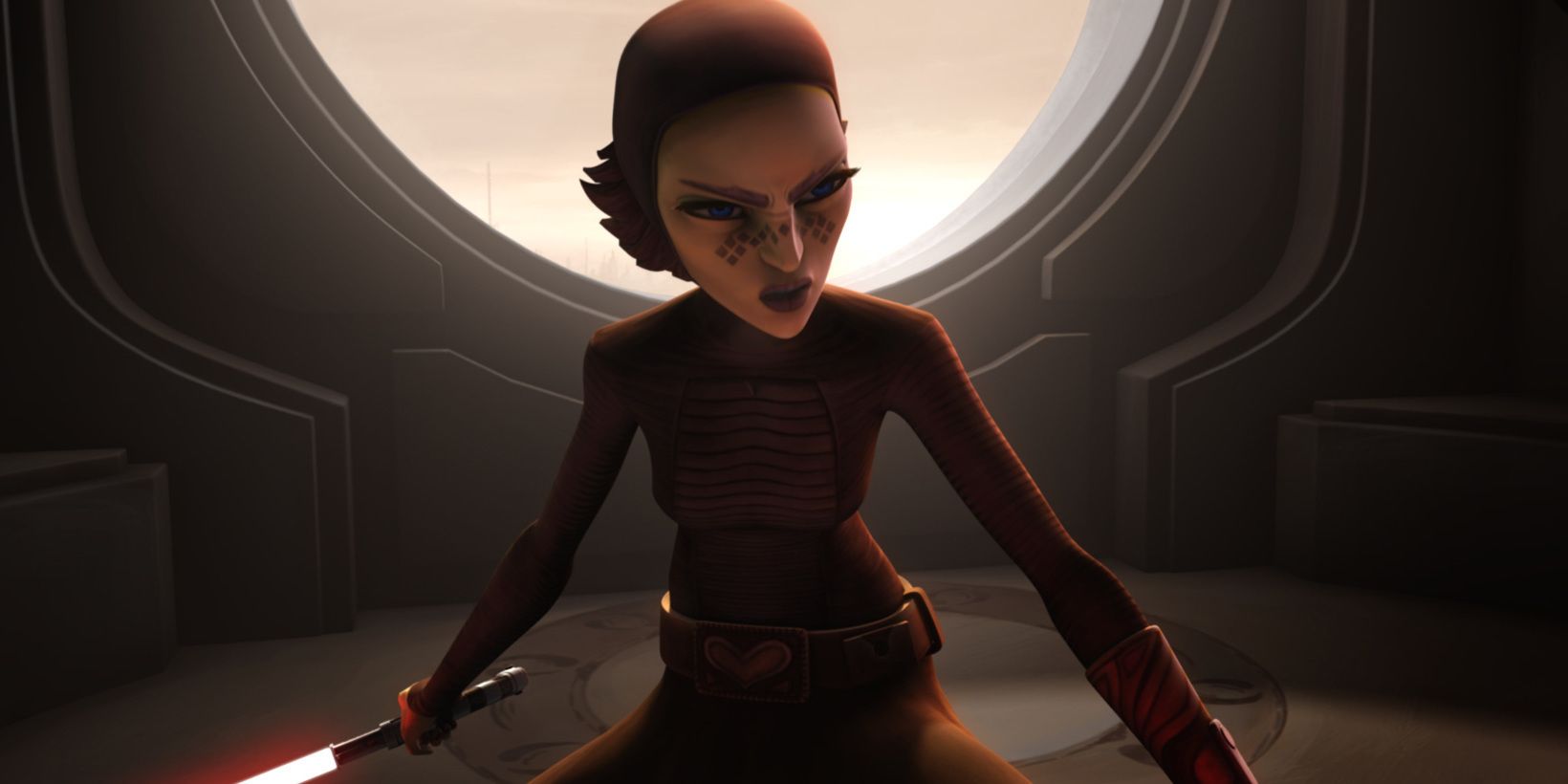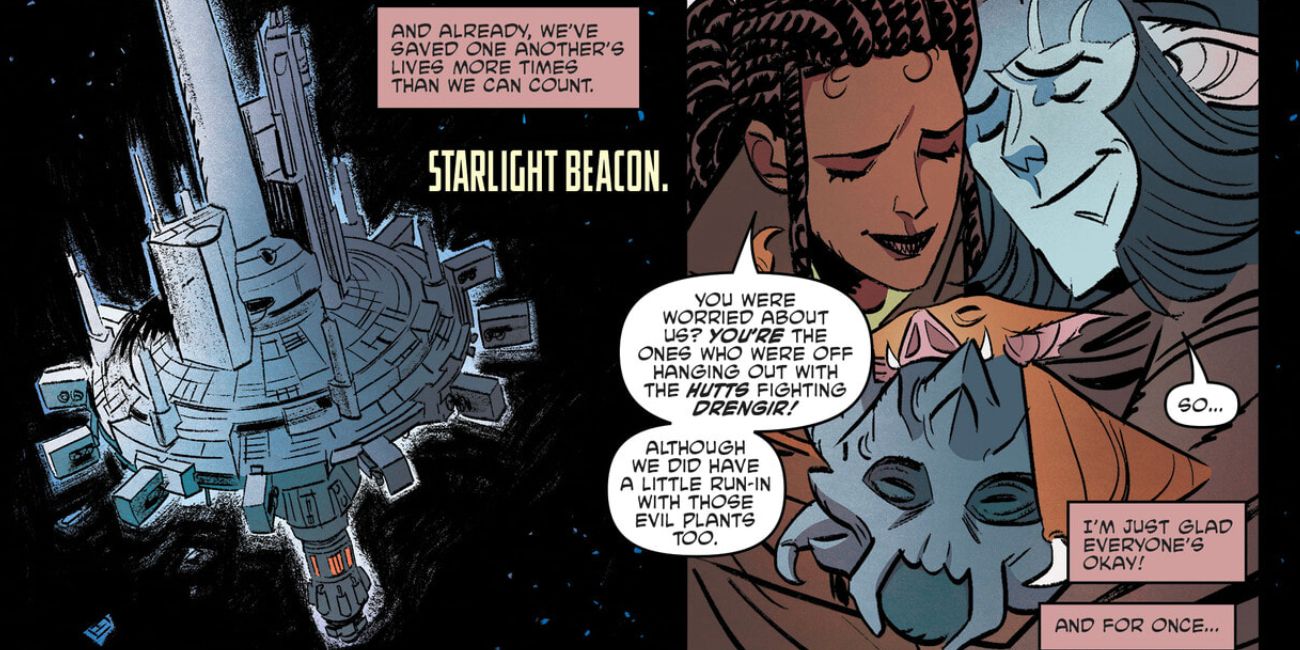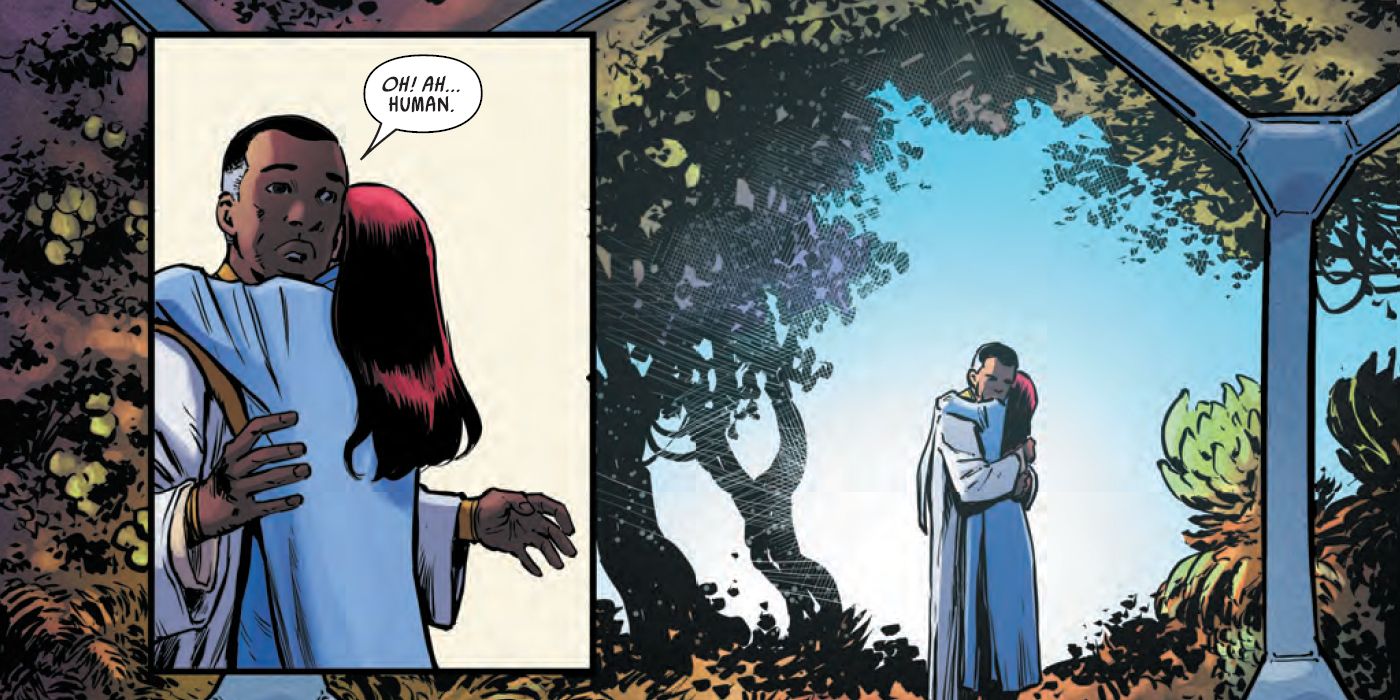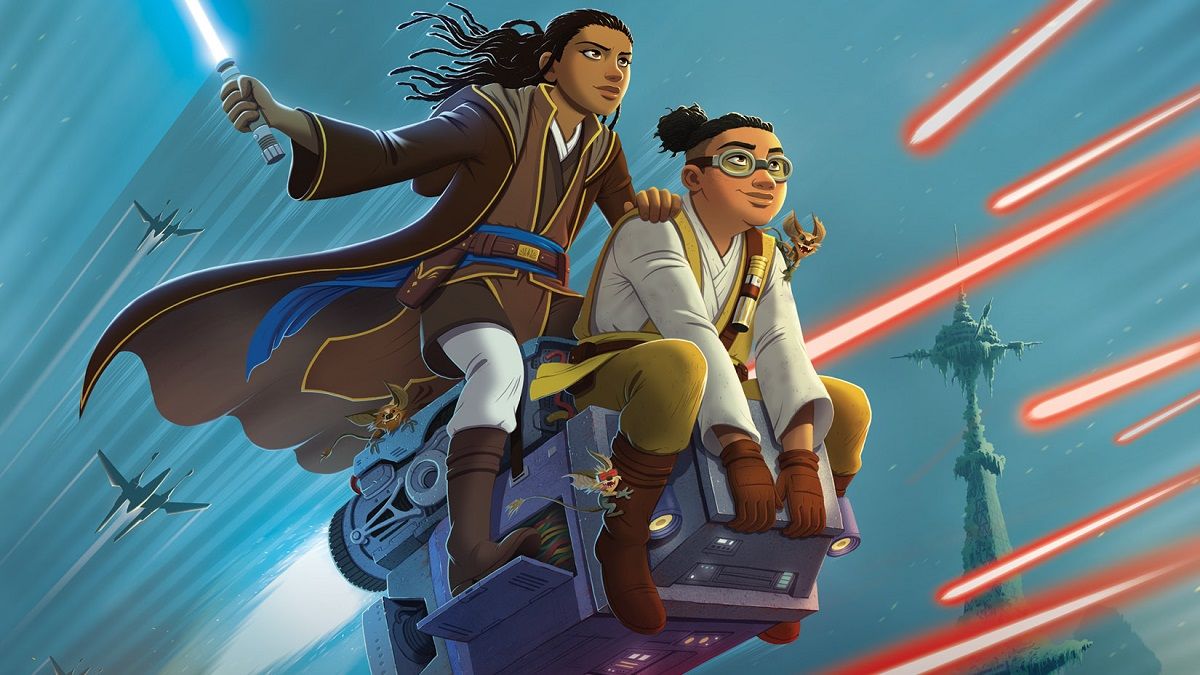WARNING: The following article contains spoilers for Star Wars: The High Republic: Race to Crashpoint Tower, Star Wars: The High Republic Adventures #1-11 and Star Wars: The High Republic: Trail of Shadows #3, on sale now.
One of the greatest mistakes that the Jedi made in Star Wars: The Clone Wars was not providing a healthy support network to Jedi and Padawans who were fighting in the war. While it is true the Jedi, Padawans, and Younglings of the High Republic era also faced battle and terrors far beyond anything they expected, their lives differed in one significant aspect. The older members of the Jedi Order provided emotional support to their proteges back then.
Barriss Offee best exemplifies the failure of the Jedi Council to support their Padawans emotionally throughout the war. Barriss' betrayal of the Jedi Order did not spring from nothing, after all. Earlier in the series, Barriss had multiple traumatic experiences back to back. In "Weapons Factory," the sixth episode of Star Wars: The Clone Wars's second season, Barriss and Ahsoka Tano nearly died while destroying Geonosian tanks. In the process, both she and Ahsoka learned their lives were expendable for the "greater good."
Later, a Geonosian brain worm possessed Barriss during "Brain Invaders." Under the creature's sway, she attempted to kill Ahsoka. Despite these accumulating traumas, no one attempted to give Barriss support. No one even seemed to ask her if she needed help. Yes, her subsequent terrorist actions were horrible. However, the Jedi's failure to recognize the Padawans and Younglings' needs during war laid the path that got her there.
In contrast, the Jedi of the High Republic era were far more focused on protecting the younger Jedi from the horrors of wars. Throughout Star Wars: The High Republic Adventures, the Padawans, and Younglings were predominantly sent on relief missions, diplomatic meetings, and other tasks away from the frontlines facing down the Nihil. While the Padawans sometimes found themselves in danger anyway, the older members of the Order did try to protect them. More importantly, they also provided support after the younger members' exposure to possible trauma.
The easy affection the Padawans show for each other during this era also makes the coziness of the Jedi Order evident. So does how the older Jedi try to make sure that the Padawans grow up focused on more than battle and destruction.
The Great Jedi Rumble Race run by Jedi Masters Torben "Buckets of Blood" Buck and Kantam Sy in Star Wars: The High Republic Adventures #11 by Daniel José Older, Harvey Tolibao, Jake M. Wood, and Rebecca Nalty is a prime example of this. The activity both allowed the younger Jedi to explore their abilities and provided needed relief from their worries about the Nihil's onslaught in the Outer Rim. While it may not have been a complete success -- Lula Talisola, in particular, still worried about the Nihil and her friends throughout the race -- it did show caring for the Padawans and Younglings' emotional well-being was a top priority at the time.
This care also shows up in the rest of the subseries. For example, Star Wars: The High Republic: Trail of Shadows #3 (by Daniel José Older, Dave Wachter, Giada Marchisio, Ian Herring, VC's Joe Sabino, Gerald Parel, Annie Wu, Carlos Lau, Tom Groneman, Danny Khazem, Mark Paniccia and C. B. Cebulski) concerns the aftermath of the Great Leveler's attack on Terec, Ceret and Keeve Trennis. As Keeve recounts the horrors she witnessed, Emerick Caphtor listens with kindness. He even gives her a comforting hug when Keeve finishes.
Later, Emerick explains to Sian that Jedi do have emotions. For instance, they fear for their friend. This admission grants Sian to offer Emerick needed comfort as well.
RELATED: Star Wars: Was The Father on Mortis a Gray Jedi?
This care might seem antithetical to the Jedi's warnings against attachments, but the subseries give that directive more nuance. For example, in Daniel José Older's Star Wars: The High Republic: The Race to Crashpoint Tower, Lula worries that her friendships and attachments were counter to the Jedi's teachings. In reply, Vernestra Rwoh explains that bonds with others are actually integral to the Jedi's ability to protect the galaxy. As Lula reflects, being a Jedi "didn't mean cutting yourself off from love or not having emotions. It meant finding balance within those emotions to be able to still seek out the light, to do the right thing." Thus, attachments are essential; they just cannot get in the way of protecting the galaxy. If the Jedi of the Clone Wars era had embraced this balance more, Anakin Skywalker would not have had to hide his relationship with Padmé and could have sought more guidance and support from his fellow Jedi.
Therefore, the Jedi of the High Republic era represents the golden age of the Order precisely because they put more care into their connections and the emotional well-being of all Jedi. By extension, this means extending that care towards the rest of the galaxy and the people they protect as well. As the Nihil continue to find new ways to terrorize the Outer Rim, the Jedi's connections and attachments to each other could ultimately save them from collapsing under the weight of their responsibility. Was the tragedy of Order 66 and Palpatine's rise preventable? Perhaps. If only the Jedi of the Clone Wars era provided more emotional care to their Padawans and Jedi.




